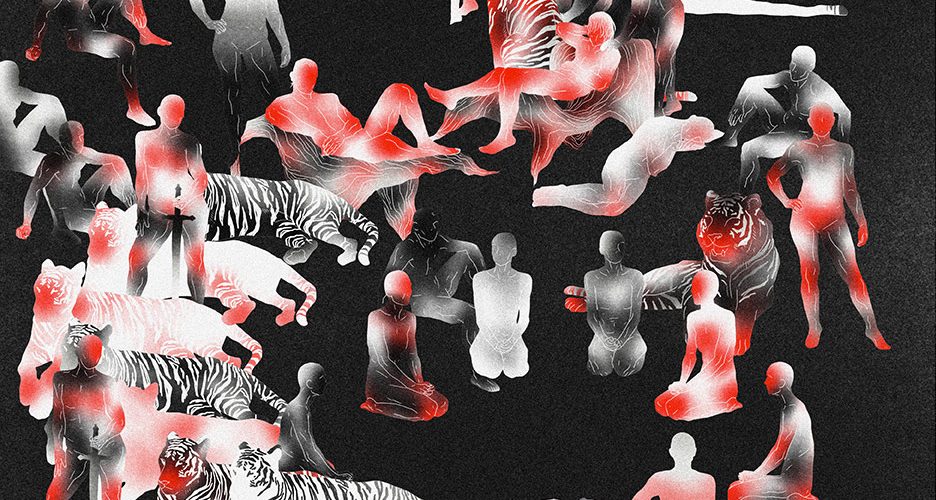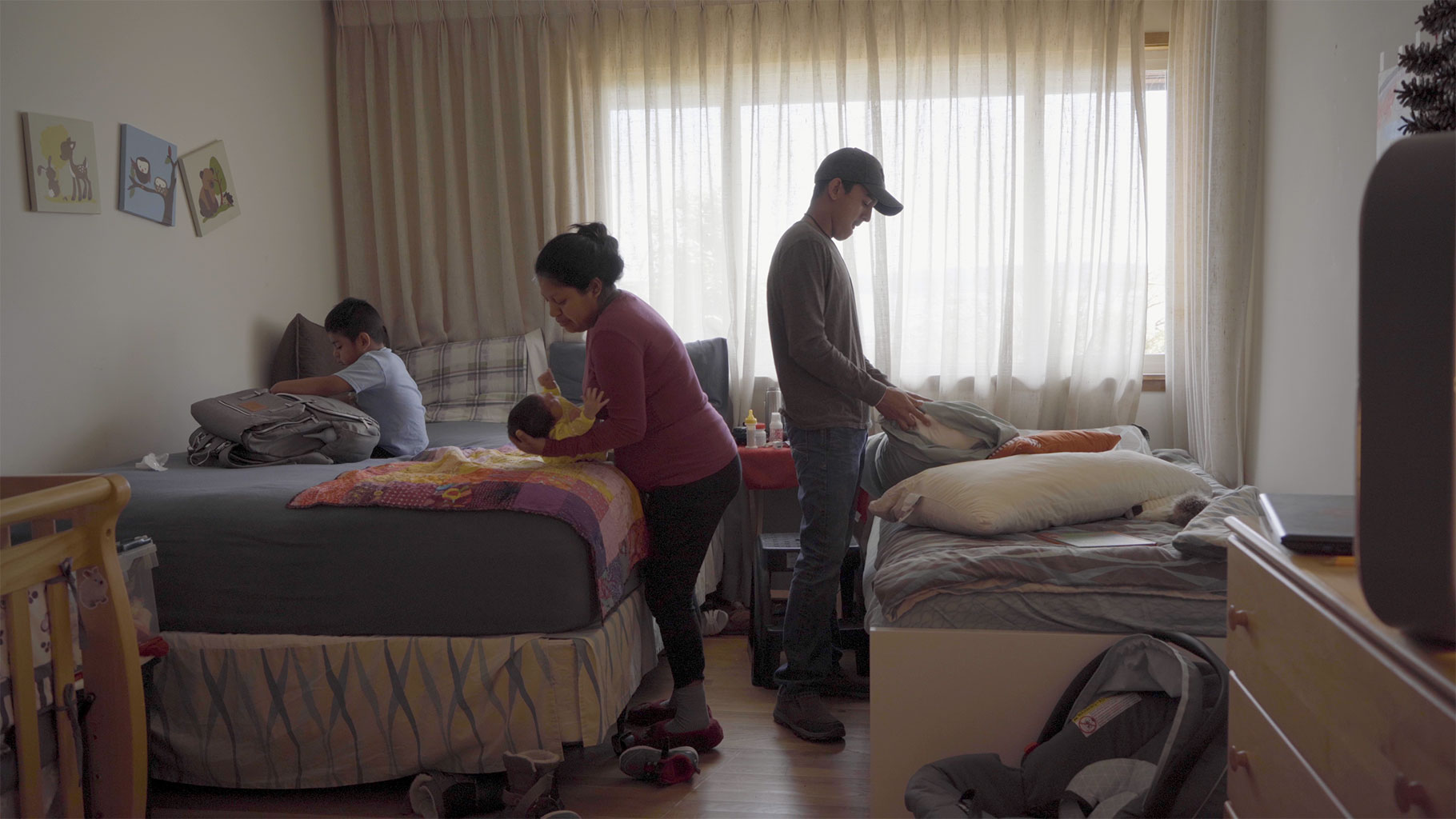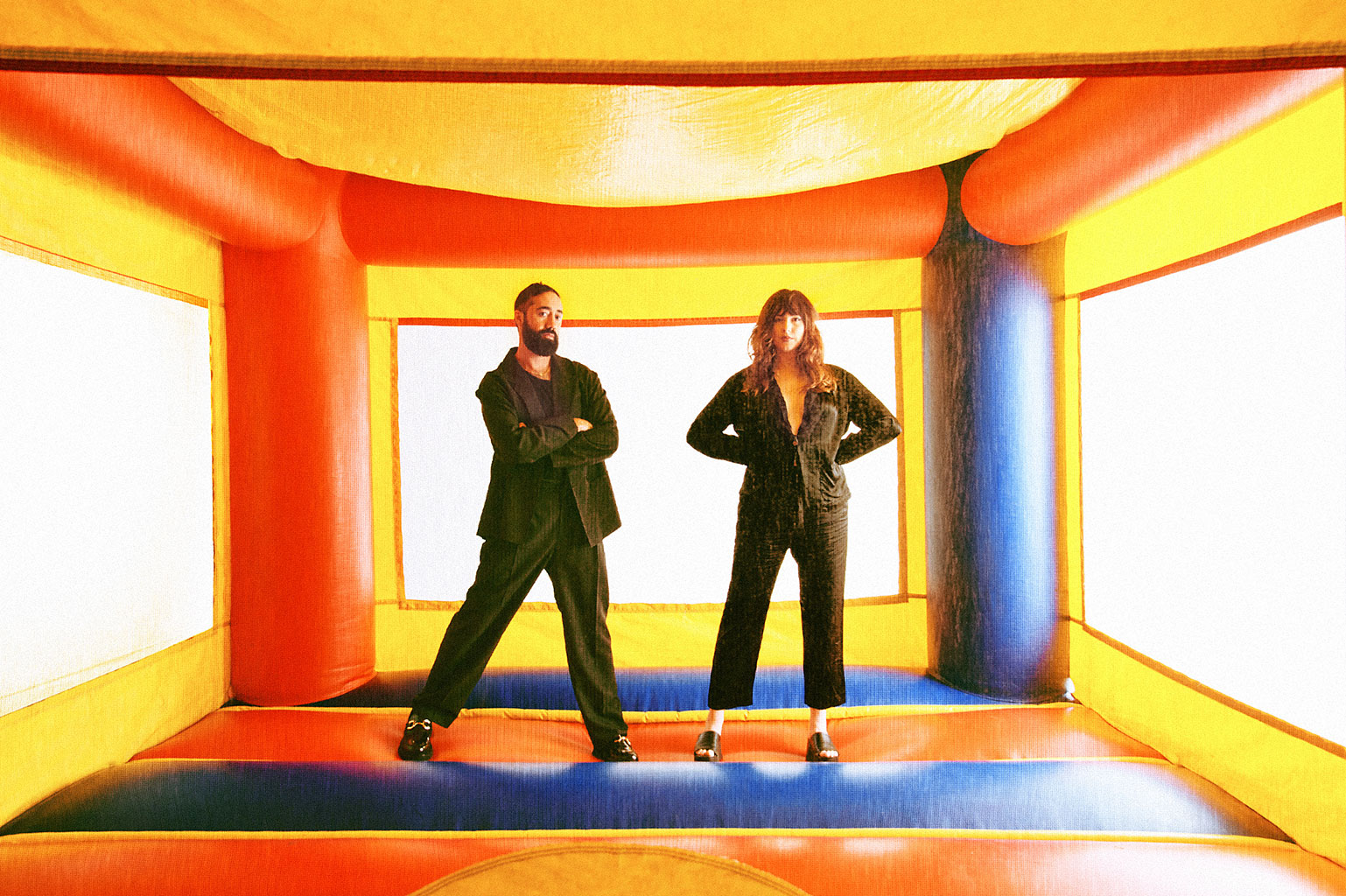Cinematography by Avery Johnson; Interview by Vee Hua
Q&A with Yewon Kwon
Can you tell me a bit about your artistic background and training? What artistic mediums do you tend to prefer?
I graduated from the School of the Art Institute of Chicago as an Undergrad in 2013. SAIC doesn’t necessarily provide a lot of formal training, but encourages students to try new processes and techniques outside of your comfort zone, and to fail often and learn from it. I tend to gravitate towards printmaking — specifically risograph, silkscreen, and offset printing, bookmaking — and like to experiment with sculpture when I have the space to do so.
You’re relatively new to Seattle. How did you make your way here and how has your art changed or transformed along the way?
Previous to Seattle, I had been living in Chicago for eight years. My partner had been living in Illinois his entire life, and we were both wanting a lifestyle change and wanted to be a little closer to nature, so we decided to move to Seattle in late 2020.
In the more physical sense, my art has become much more digital than physical. It’s been hard to adjust to the financial differences between Seattle and Chicago, and I haven’t been able to have my own studio like I did in Chicago, which has forced me to create more work on my computer. I’m excited to eventually branch out and find new presses and people to work with so I can continue publishing my own work! I’m also really hoping to eventually find a studio so I can start working at a larger scale again.

Ordinary Hands, 2-color Screen print on White Cougar cover paper, 2022
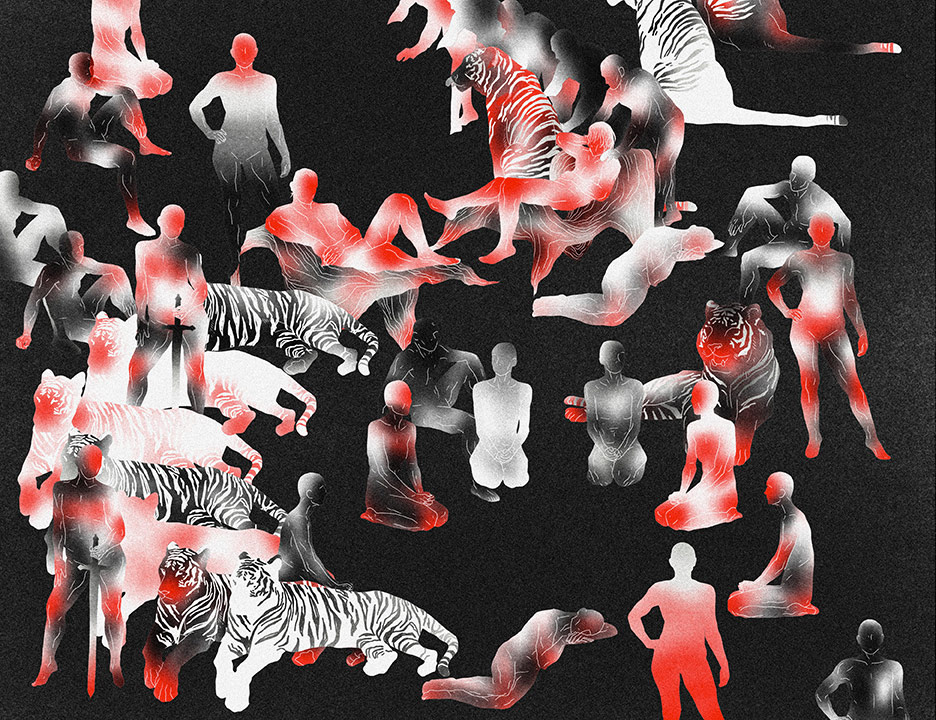
Place Thy Scarlet Claws Upon Me, Digital drawing, 2021
Would you like to share a bit about the role of the all-ages nonprofit venue, The Vera Project, in your creative life? How does the DIY community resonate in general with your artistic practice?
I started working at The Vera Project in late 2021. Growing up, I didn’t have an artistic community to be a part of, and it feels really wonderful to finally be a part of such a robust one now, and help do my best to facilitate a welcoming artistic community for others as well.
Printmaking is almost always a very community driven medium; the price of equipment kind of forces people to come together — but I think the community and the art becomes richer because of it. To me, it makes sense that a medium whose entire purpose is to have multiples, also involves sharing a space with others and working together to build up your art. Getting to create prints at The Vera Project, alongside so many wonderfully creative youth and peers, is really exciting and a privilege to experience.
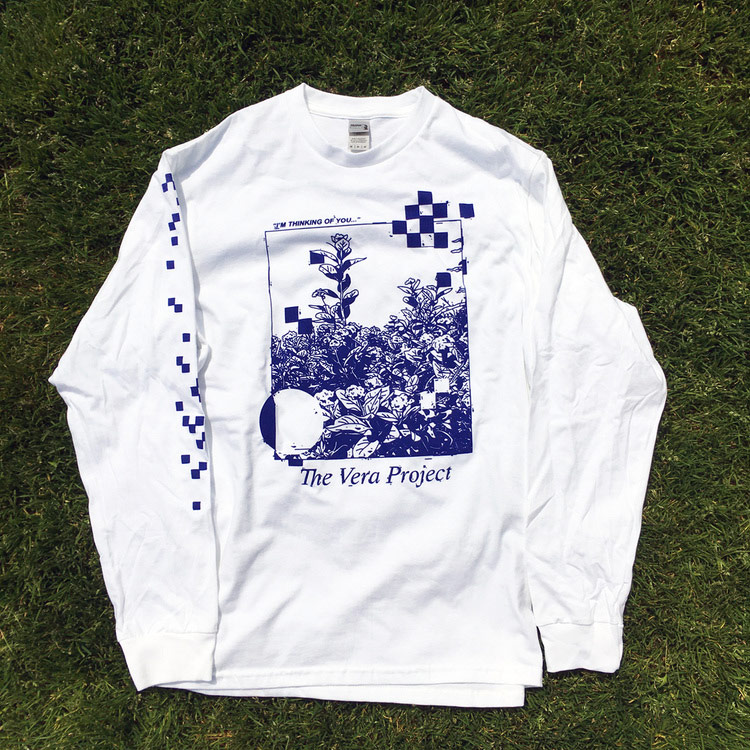
The Vera Project – Spring Merch Line Up, Line of merch designed for The Vera Project’s Spring 2022 merch line, 2022
One of the mediums you work in often is zines. Can you tell me about how you came to working in them, and why they spoke to you?
Growing up, I was always interested in comic books, starting out with things like Garfield and eventually moving into manga as I got older. When I was a freshman in college, my dorm RA, Ian, introduced me to zines, and encouraged me to join my school’s zine publishing group called Xeroxcandybar.
I think zines spoke to me because of the community, and the printmedia aspect. Chicago has a huge and extremely welcoming zine community. As a new person in the city, the idea of being a part of a group of artists was really inviting to me. I feel really lucky that so many wonderful artists in Chicago took me under their wing, made me feel welcome, and helped me grow as an artist. Zines are also so cheap and easy to make, and acted as an efficient medium for me to publish work quickly and easily.
Zines are also similar to what I was saying previously about printmaking. Besides the fact that zines are obviously printed, the natural aspect of holding and interacting with something in your hands really creates an intimate interaction of someone’s work. For me, holding and reading a zine in your hands is a very different experience than looking at a painting on a wall. A lot of my work is very personal and often deals with themes like guilt, power fantasies, gender and sexuality, religion, and race. I hope that readers can look at my work and experience what I am feeling putting into my work.
What is the Pallor Pink series? I’m curious also about the BIPOC edition.
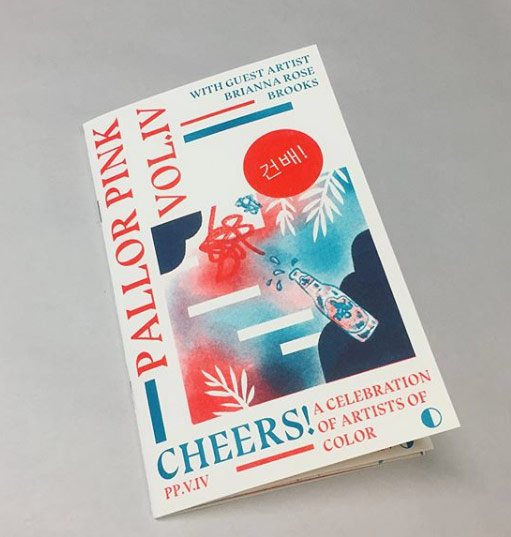 Pallor Pink is a (usually) bi-monthly zine series I run. Each edition has a specific theme, and I curate and print the submissions into a printed zine. Each edition is traditionally printed by myself. So far, I’ve published six different editions.
Pallor Pink is a (usually) bi-monthly zine series I run. Each edition has a specific theme, and I curate and print the submissions into a printed zine. Each edition is traditionally printed by myself. So far, I’ve published six different editions.
One that I’m really proud of is called “Cheers!” All the artists in that edition are artists of color. Earlier that year, I had made an Instagram post online saying I was tired of feeling pressured to only make work about racial trauma, and how myself and other artists of color feel that we only get positive feedback from others when we make art about racial trauma. I had a teacher say that they felt my statement was “unfair,” and it really made me upset to express how I was feeling and be further invalidated in that way. I wanted this zine to act as a space for artists of color to not feel like they had to force themselves to make painful work; I wanted them to feel free to express whatever they wanted.
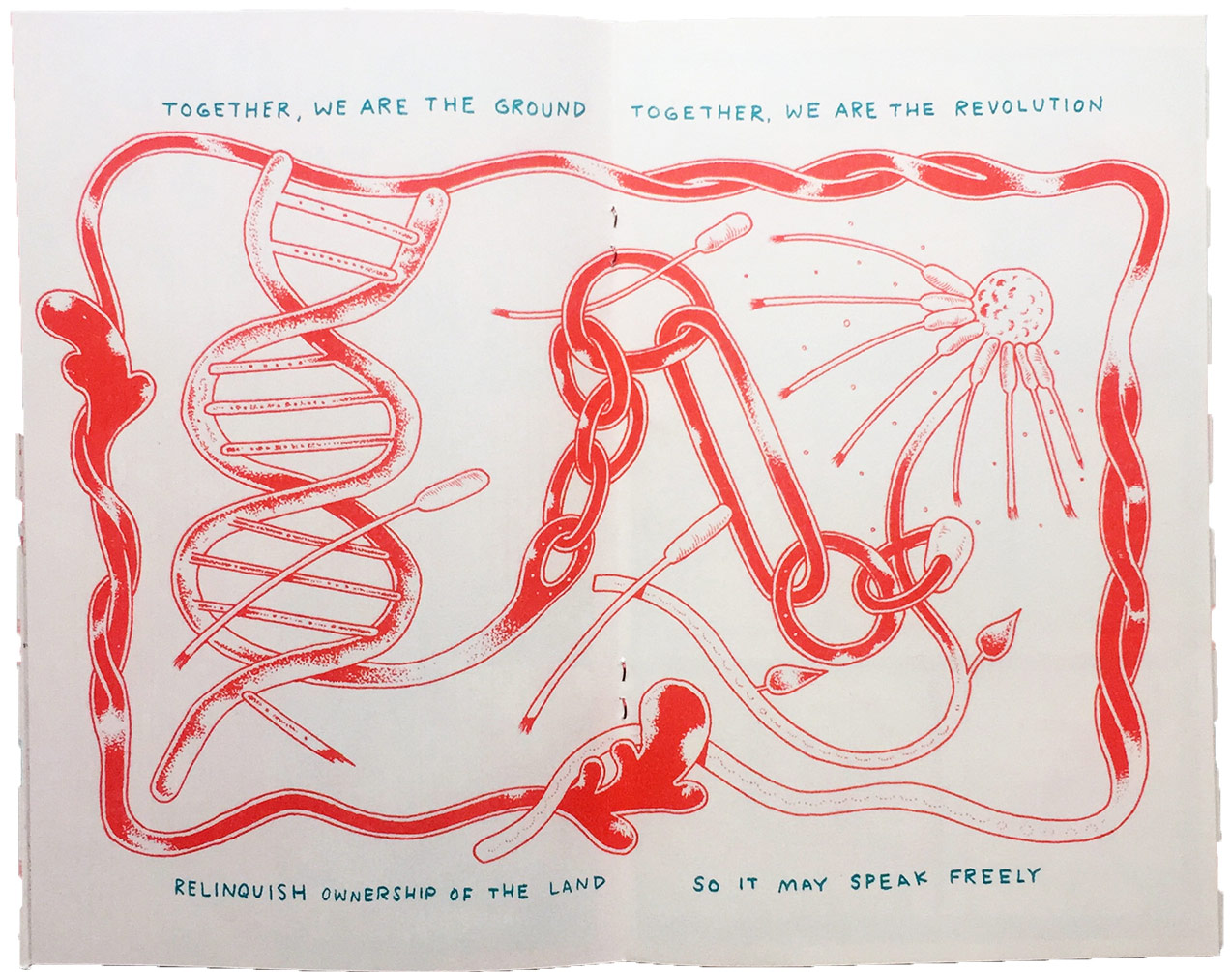
Pallor Pink Vol. 4: Cheers! A Celebration of Artists of Color, 28-page zine. Risograph printed using Red and Light Teal inks, printed by Yewon Kwon at Perfectly Acceptable Press. Featuring guest artist Brianna Rose Brooks, with submissions from Yewon Kwon, JB Roe, Cory Feder, Hannah Lin, Manuel Velasco, John Akira Harrold, Luisa Lacsamana, Jordan Jackson, Sacha Luck, Dena Springer, and Forrest Jove. Includes an additional fold out double-sided poster by Wayne P. Tate Jr., 2017
Writing plays a significant role in your work, and that seems to show up in numerous forms. What is your relationship to writing, and how does it help you further the messages you wish to share?
Growing up, I actually wanted to be a writer over a visual artist. I did a lot of (probably not very good) slam poetry in high school, and always have a sketchbook on hand to write little notes and phrases.
I think writing is another way for me to express how I’m feeling in my work. Sometimes, there’s stuff that I’m feeling that just feels too complicated to express in only visuals, without me getting in my own head and thinking that I’m being cheesy. I’ve been told that the visuals of my art can sometimes be a little too obvious or a little too vague, so I like to add in text to counteract whatever my art is doing. I want people to get a vibe of what I’m thinking about in my piece, but I want to respect the audience enough for them to gain their own conclusions as well.
Tell me about the zine, Would’ve Been Could’ve Been Should’ve Been Never Was and Never Ever Will Be. What inspired it and what are some of the themes unpacked in it?
Would’ve Been is a zine I made right after I graduated from undergrad. Coming out of a four-year period where everything was very stable, [then] entering a very unsure and anxious period of my life was really stressful for me. It was very strange to go from having a set schedule and exact deadlines for literally my entire life, to suddenly having to fill my own time and make things happen for myself. I didn’t have a job, I no longer had the privilege of having access to an artistic studio, and I was very physically sick. I couldn’t eat anything without getting physically ill, and I couldn’t leave the house for days because I felt so nauseous and woozy all the time. Would’ve Been addresses a lot of those fears I felt during that time, where I would get in my own head and worry so much about all the stuff that I had to do, that I would just lay in bed all day worrying and never try to address what was wrong. This “cycle” of fear and inactivity has become a large theme in my current work as well.
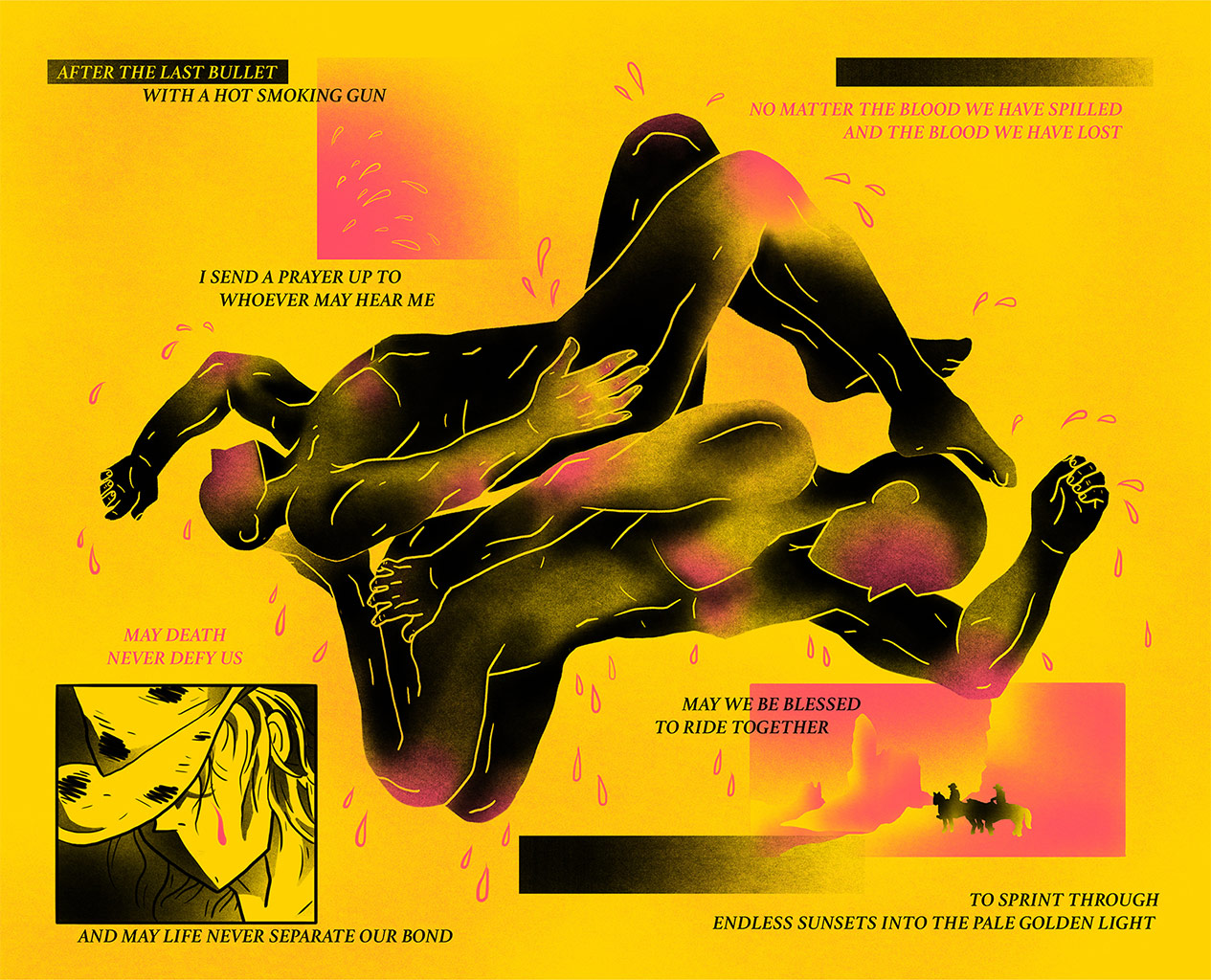
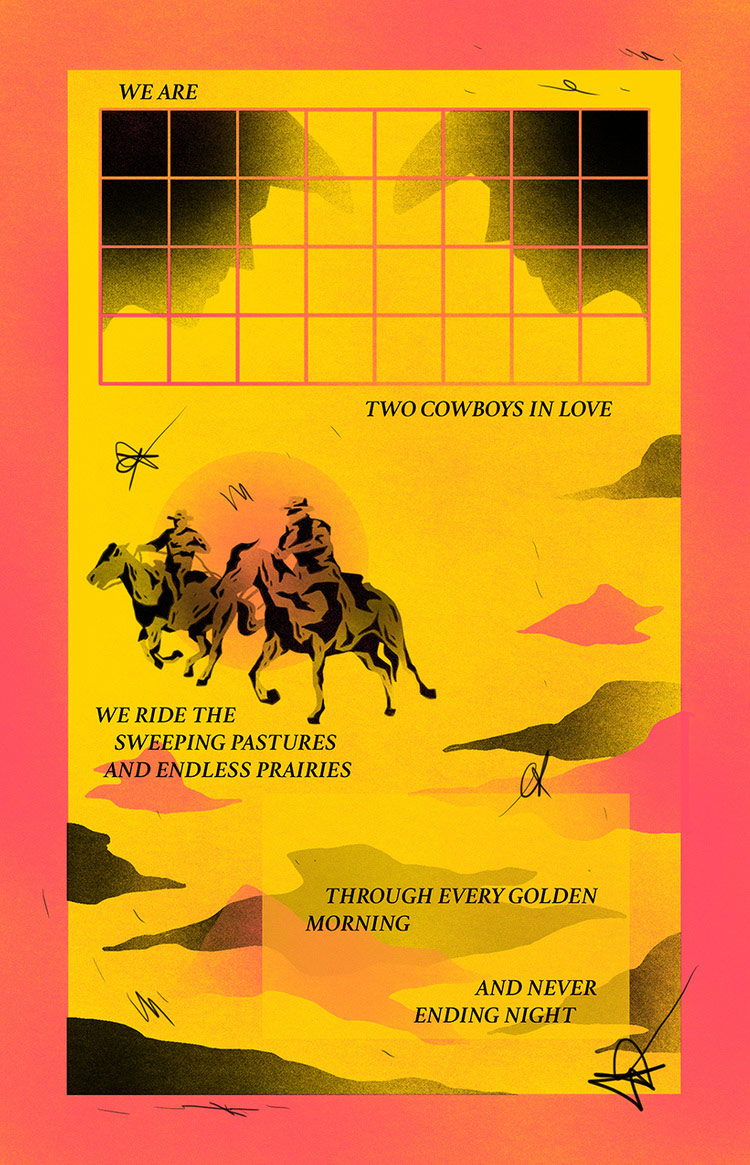
We Are | Two Cowboys In Love, Comic made for Pallor Pink Vol. 6: This Ain’t My First Rodeo, Digital Drawing, Risograph printed with Fluorescent Red and Black inks on yellow paper. 2019.
Much of your work has corporeal elements, such as the gnashing of teeth, bodies, etc. What draws you to such elements, and how does art help you gain an understanding of the body?
I think I am drawn to illustrating the human body so much because it’s something that everyone can relate to. We all have a physical body that we inhabit, and there’s so much physical and emotional feeling that inhabits our bodies alongside us. I tend to think of myself as a kind of quiet, reserved person, but I feel so much more inside of me, and the only easy way to express it is through my work. I think that’s why I so often draw people being so physically powerful, taut muscle, and gritted teeth. This sounds so silly to say, but I think a lot about that stupid meme that’s like, “aren’t you tired of being nice? Don’t you just want to go ape shit?” And honestly I think sometimes, I really do. I think there’s this stereotype about Asian women that they’re always supposed to be seen as very prim and submissive, quiet and delicate. I definitely felt like I had to fit into that category growing up. After starting to identify as nonbinary, I started thinking more about feeling that way. I don’t want to feel nice and quiet. I’m messy; I make mistakes. On some days you just want to feel scary, like a rabid dog. You just want to be left alone.
You spoke to me of the difficulties of making work during COVID. Where are you now? Where do you hope to go?
When COVID first started, I was putting a lot of pressure on myself to make more work. I think as an artist, there’s this constant pressure to always be producing work, to make yourself continuously relevant. Since I couldn’t really leave the house, I was really feeling the pressure of, “This is the perfect time to make work! You should be cranking stuff out!” I was placing so much pressure on myself, but not giving myself the time or thought to take care of myself emotionally and deal with all of the anxiety I was feeling. It almost felt like I was back at square one — back where I was working on Would’ve Been and just punishing myself for feeling too anxious to work. I was worrying so much about what I wanted to do that I couldn’t ever bring myself to get started.
Over time, I’d like to think I’ve eased up on myself a bit. I’m currently working on another book with a similar subject matter, where I’m thinking about the concept of an ouroboros, but in the context of how I treat myself in comparison. I think with an ouroboros, there’s a lot of focus on the rebirth over death, but in my mind, all I can focus on is the death. I’m going to try to push myself to think about getting up after a failure, but it can be hard to get there sometimes.
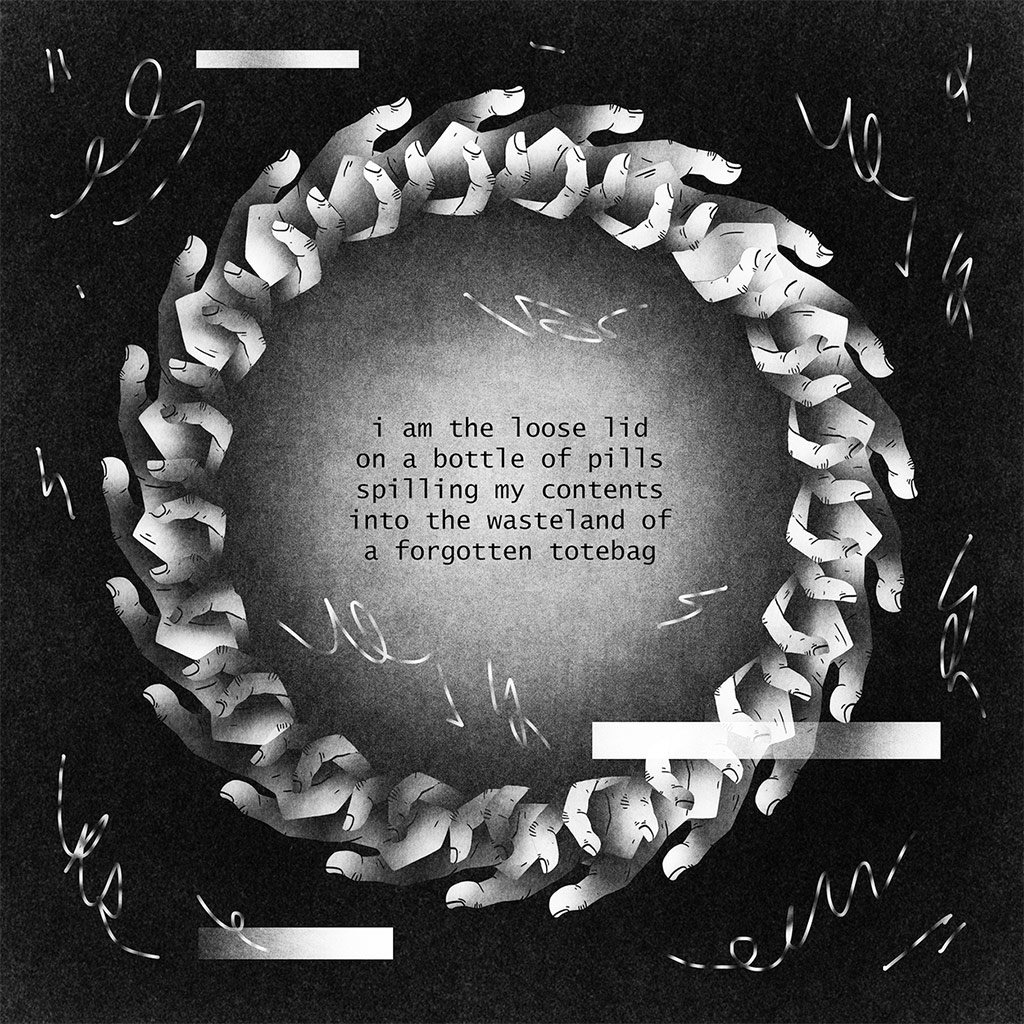
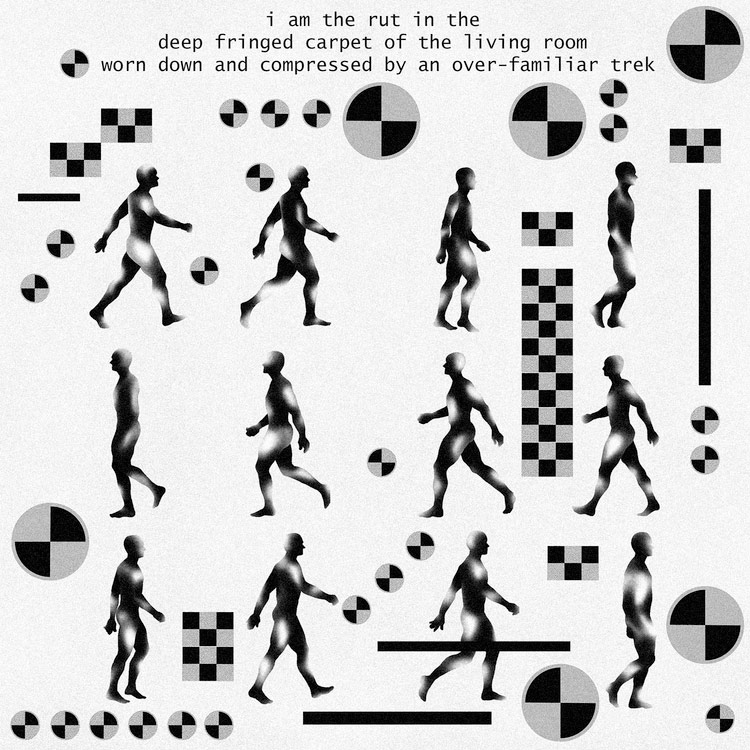

I AM,, Digital drawings, 2020.
Is there anything else you would like to add?
Some of my work has been helpful for me to address complicated feelings about my identity: I am a nonbinary Korean-American. Growing up, I knew very little about the history of my own heritage. My parents didn’t like to talk about growing up in Korea, and at school, we spent maybe thirty minutes tops discussing the Korean War, where obviously, America was made out to be this glorious savior. Later in my life, I read a book about the history of revolution and uprisings in Korea. As I’m sure a lot of BIPOC can relate to, there’s something so strange about having to acknowledging so much pain and atrocities committed to people you’ve never met and never will, but have a cultural connection to. I felt guilty for never taking it upon myself to learn more until that time; guilt for so badly wanting to be a “normal American” growing up. I felt anger at myself and the country I live in for sweeping so, so much war and terror under the rug and acting like heroes because of it.
Identifying as nonbinary and growing up as a Korean American felt similar sometimes. There’s a constant push and pull; a tug of war between two genders and two backgrounds. Sometimes one feels more confident than the other; sometimes both feel completely unbearable for me. But my artwork has always been a comfortable place for me to explore it all — a space for me to attempt to navigate the guilt, pain, anger, and euphoria of it all.
Ω
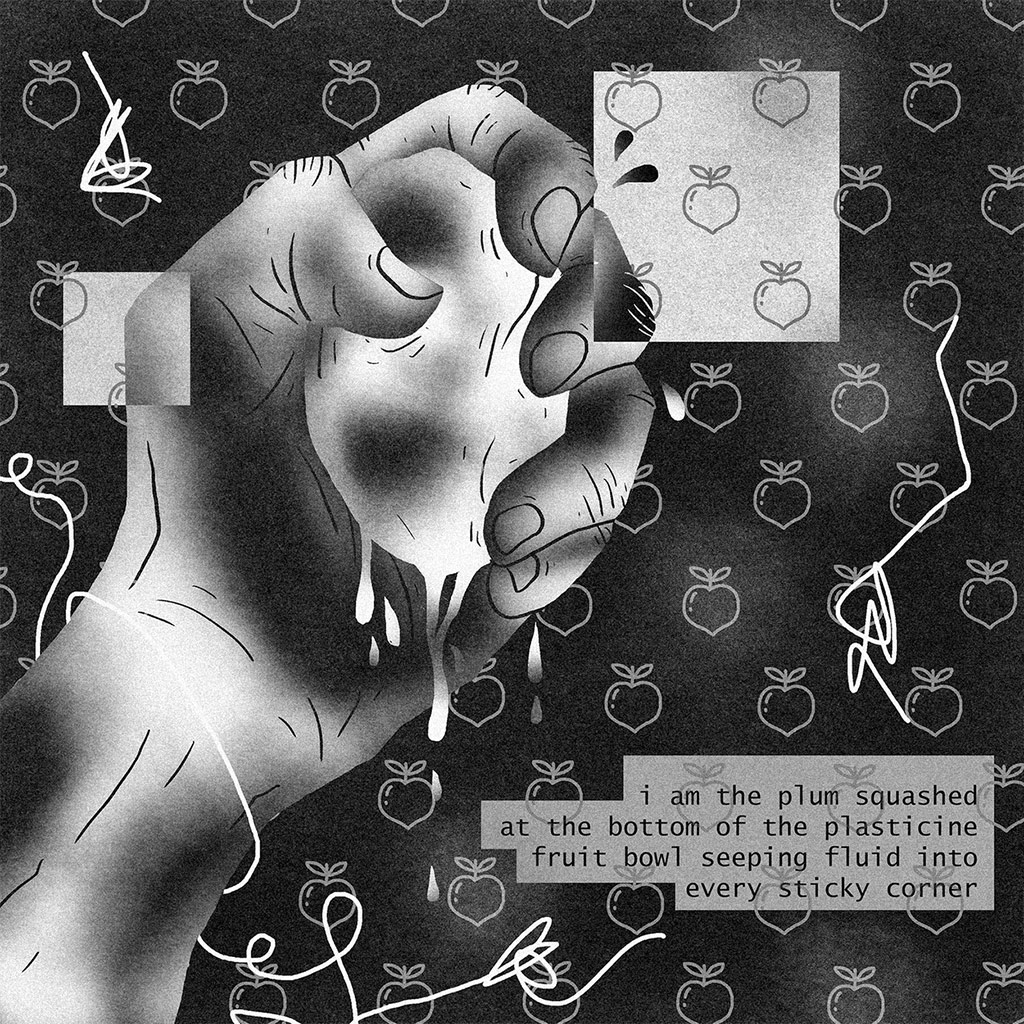
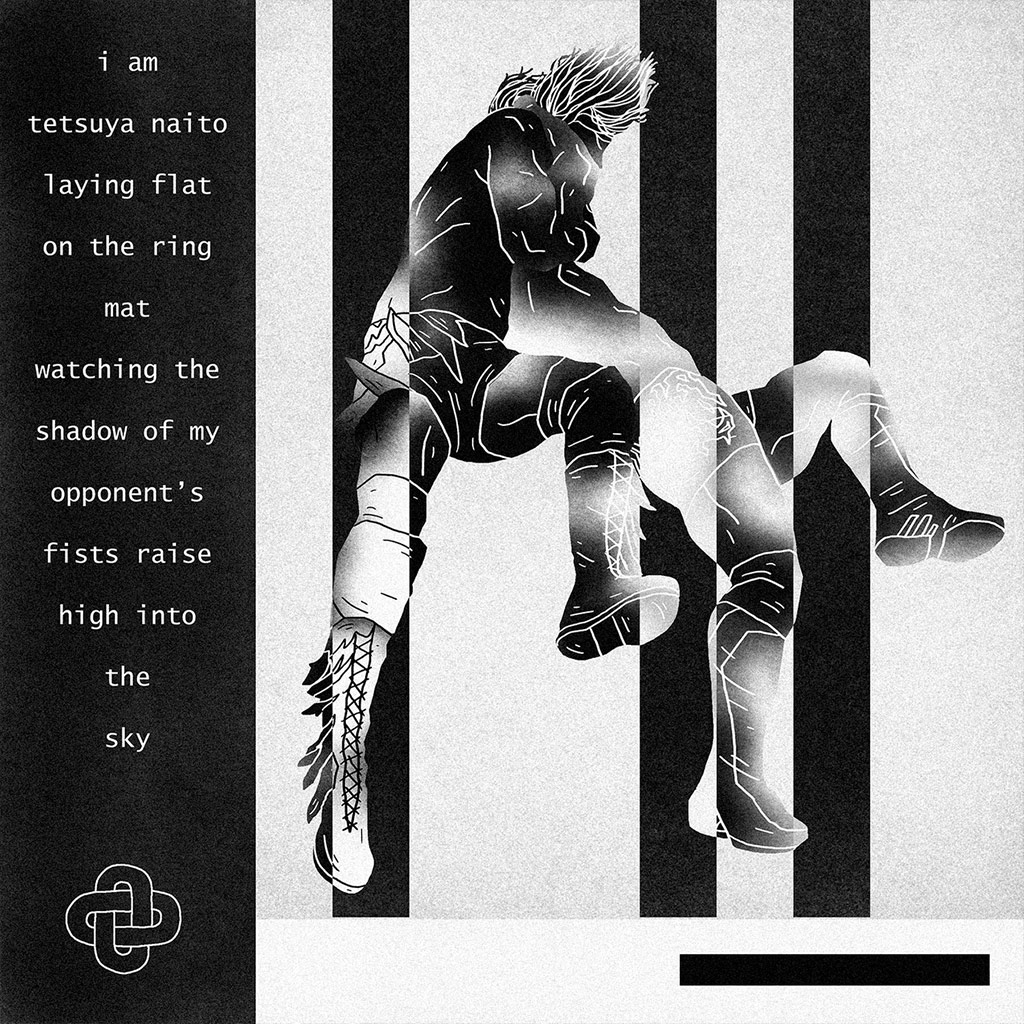

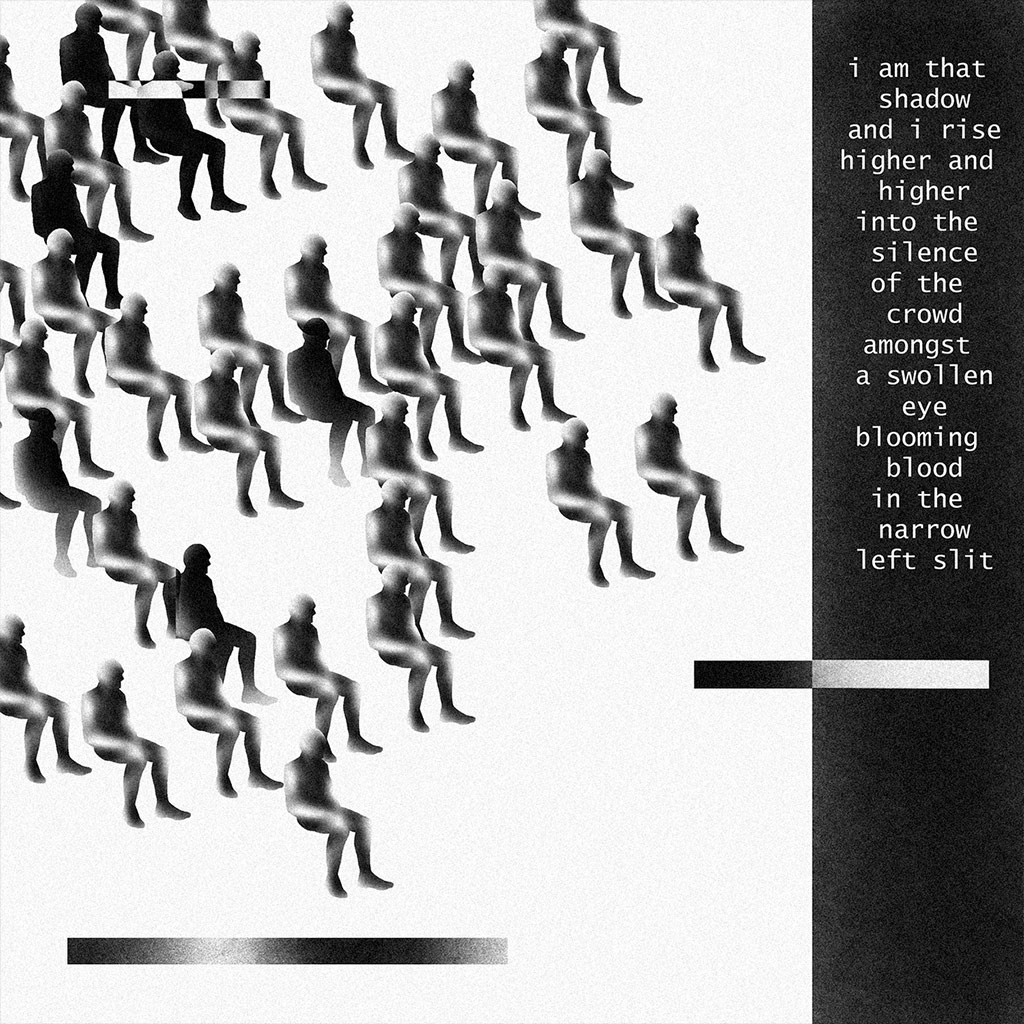
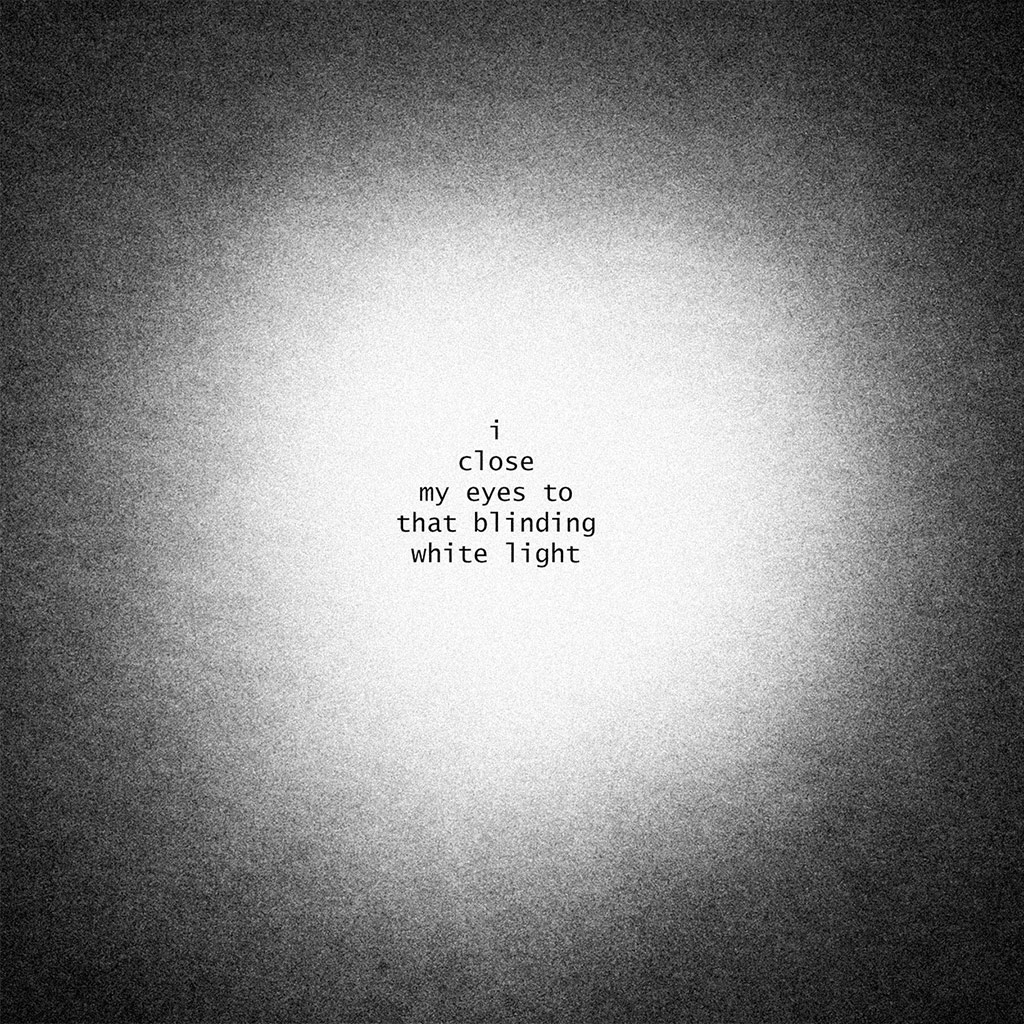
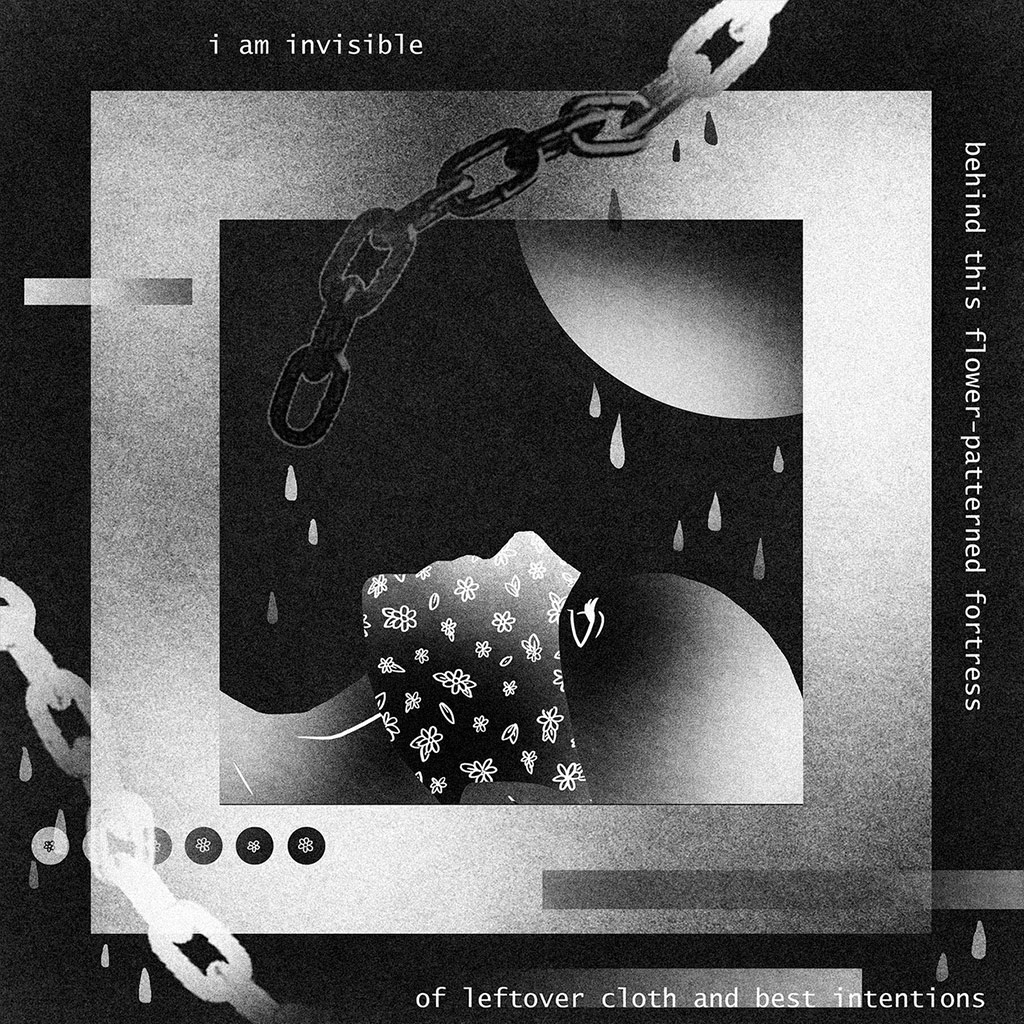
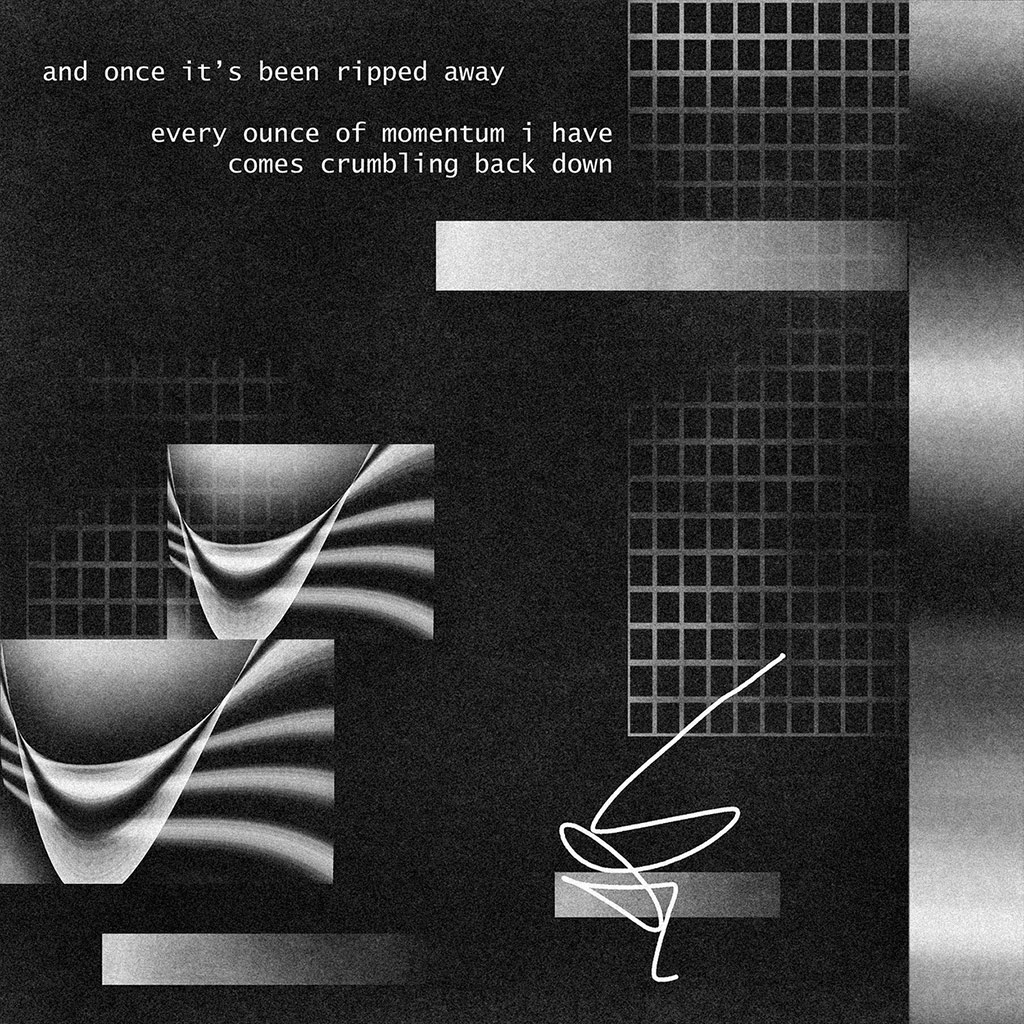
I AM,, Digital drawings, 2020.

